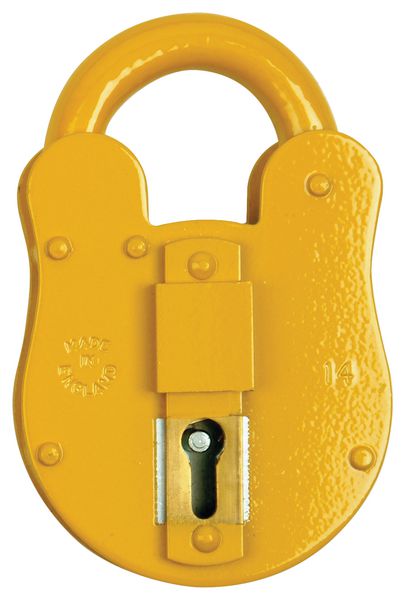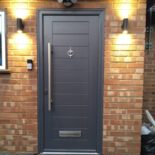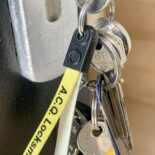It can’t be denied, padlocks can be picked. Thousands of people do it all the time. Some do it as a hobby, using specially-made tools they compete in competitions to see who is the most skilled at opening locks. This is done without keys and without damage to the padlocks, pretty cool yeh!?
You may find this a tad disconcerting. If you’re searching for a high security padlock with which to protect your valuables. But you shouldn’t worry\. We’ll guide you through what makes a high security padlock secure, and why, and give you expert guidance about selection of the right model for your application.
Your reward for buying quality goods of any kind is reliable, fit for purpose service, and that’s certainly what you get high security padlock, with added peace of mind built in. A good strong padlock is a versatile security solution not only because of the mechanical parts inside it, but also because a number of other factors are in play – and are much more important than the padlock’s ‘pick-ability’.
Why you need a high security padlock
Why should you think hard about the padlock selection points we’ll raise? Our reasoning is that we’re looking at the lock, and how we might try to break it, through the eyes of a thief. The average burglar is out to steal your property in the shortest possible time. He isn’t interested in picking your lock; he’s going to resort to brute force and a selection of tools to get past it quickly. After all, he’s out to steal you property in the shortest possible time, so he’s not going to worry about damaging your lock.
Because he’ll be looking for 100% ‘success’ in a very short time, so as not to draw attention to himself, he’ll apply considerable amounts of force to cut the shackle with bolt-cutters, twist the lock with a stout bar to break it, drill through it – or simply tear it and its hasp away from the door or gate it’s protecting.
Given that those are the threats a padlock will face if it’s subject to attack, the best thief-proof padlock must be:
• resistant to
cutting, both by virtue of its design and its construction;
•
resistant to twisting, once again by virtue of its design and
construction
• tough to drill, because of the materials used to
build it;
• part of an overall security solution. The world’s
strongest padlock is of no use whatsoever if it’s fastened to the
world’s weakest door using inadequate fittings.
What makes a high security padlock?
The build quality
Properly-engineered locks are the best choice. Look for models with parts machined to very accurate tolerances and locking mechanisms incorporating ball bearings. Proper engineering to accurate tolerances using the best materials makes locks more resistant to attack. Raised shoulders around the shackle help to conceal it. Make sure it’s fitted the right way round, if the shoulders are at only one side of the shackle.
The shackle
This is the loop that fits around the fitting on the door or gate. It is subject to attack with bolt cutters.
The best option is to choose a closed shackle padlock with just a small amount of the shackle visible, so there is no space for the cutters to be applied. Pick the right heavy duty hasp and staple (the parts that fit permanently to the door) and the shackle can be completely hidden.
What metals?
Padlocks are made using primarily brass and steel, but look also for weather-resistant coatings like zinc, chrome or plastic, and re-inforced construction methods.
Hardened, stainless, or both?
You’ll notice the words ‘hardened’ and ‘stainless’ on good quality locks. Both words refer to the steel they’re made with. ‘Hardened’ describes processes during manufacture, involving carefully-controlled heating and cooling stages. The result is steel that’s harder to work –or in this case cut or break. ‘Stainless’ is about what’s in the steel. It is an alloy with precise amounts of boron, chrome or vanadium added whilst it is still molten. Good quality stainless steel doesn’t rust because the alloying elements at the surface oxide faster than the steel, so that doesn’t have time to oxidise into rust.
What about keys?
Choose a lock offering the largest-possible number of key variations. The more there are, the less likely it is that a key can be copied. Some also offer keys that can’t be copied at all, with replacements available only from the manufacturer after you’ve proved you have a right to buy them. It is possible to have a set of locks with different keys that can all be opened by the same master key.
Marine specification Padlocks
These marine padlocks are designed to withstand severe weather in marine environments, but give excellent service in other locations too. They’ll usually feature weather proof coatings. And remember that a marine environment exists anywhere salt in a damp atmosphere is likely to get at a lock – which is most UK roads in winter.
Third-party approvals
You’re not going to be able to test a padlock before buying it – but there’s no need to. Independent testing bodies have done the hard work already. Look out for the following approvals:
CEN
European standard, and the gold standard for padlocks. It rates locks from 1-6, with 6 being the sturdiest.
Sold Secure
Standard owned by the Master Locksmiths’ Association. Respected by the Home Office, Police and insurance industry. Liaises with police to keep abreast of new techniques used by thieves.
Kitemark
Oldest quality mark. Owned by the British Standards Institute. Used internationally. Recognised as a benchmark for the very best.
After you’ve bought your padlock
No padlock is a ‘fit and forget for ever’ product. Manufacturers go to great lengths to make locks as good as they can be, but none last indefinitely. Be prepared to replace them over time, but extend their lives with a little servicing; the application of lubricating oil works wonders in enhancing corrosion protection for a metal device that may well live permanently outdoors!
And finally, an at-a-glance checklist. Before buying a padlock, ask yourself:
• What’s it made
from?
• How much shackle is visible?
• Does it have third
party approval and to what standard?
• Can keys be easily
copied?
• Is it well-engineered?
• How hard will it be for
a thief to break it open?
• Is it the most appropriate model for
my application?
Answering those questions will lead you to a high security padlock solution. The effectiveness of a lock isn’t just about strength in tumblers; it’s about strength in depth and detail.






